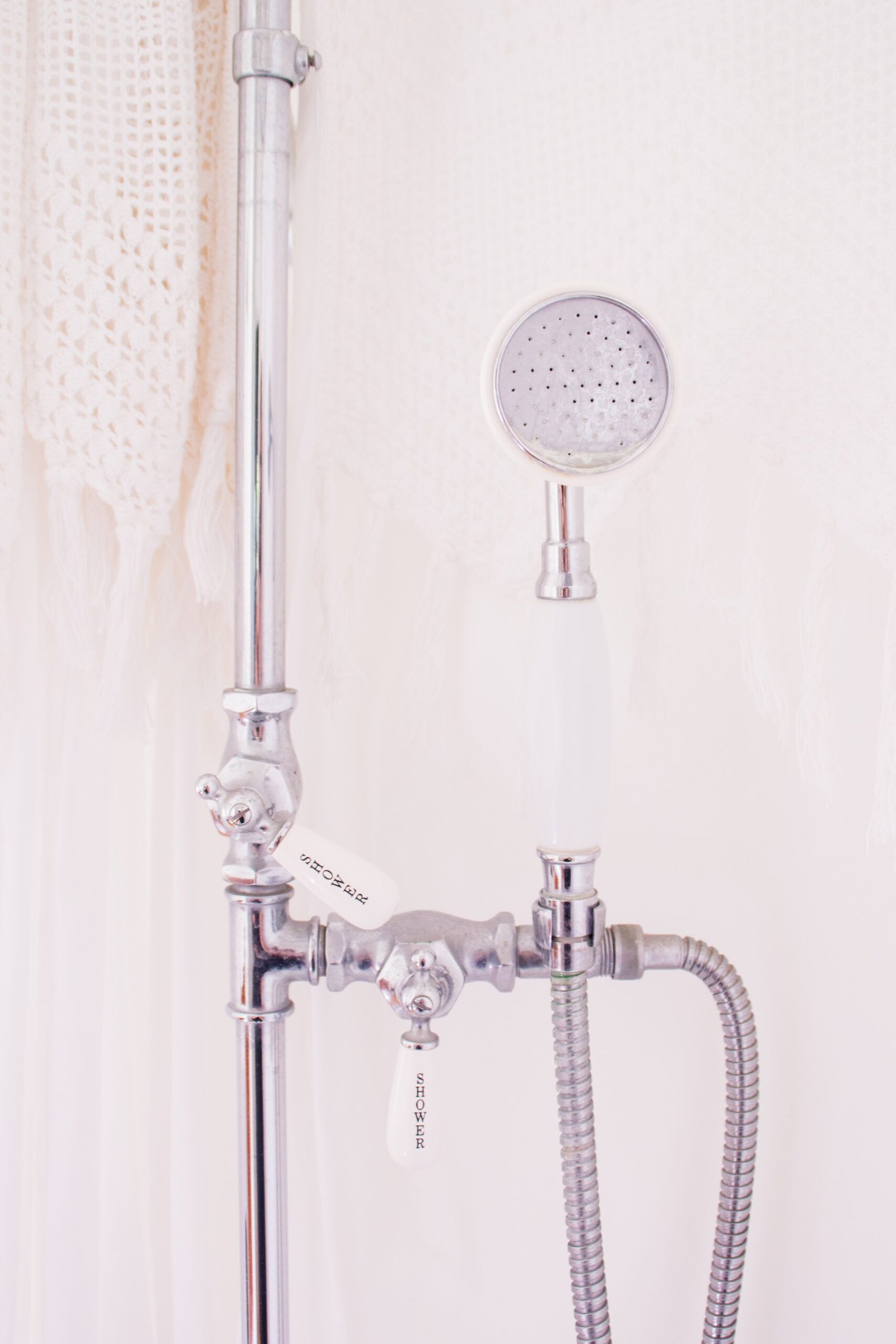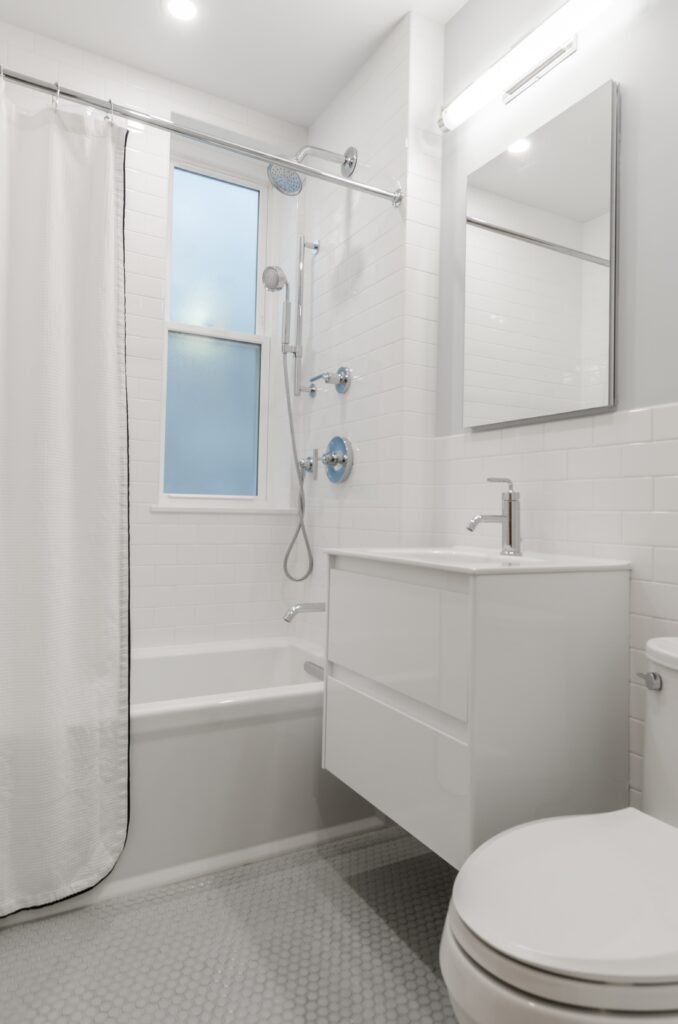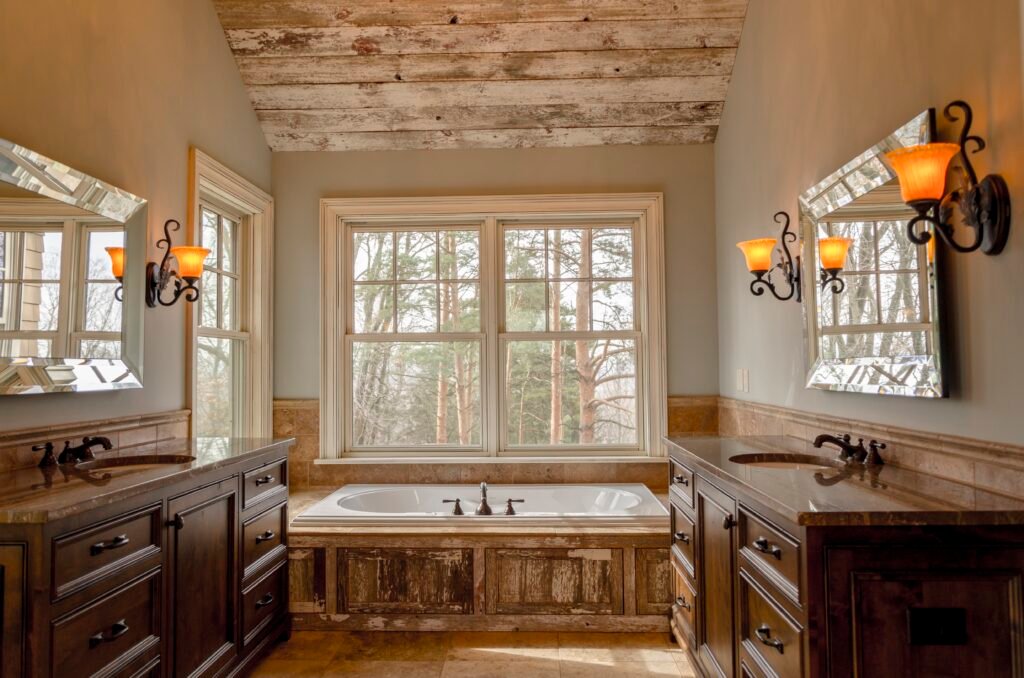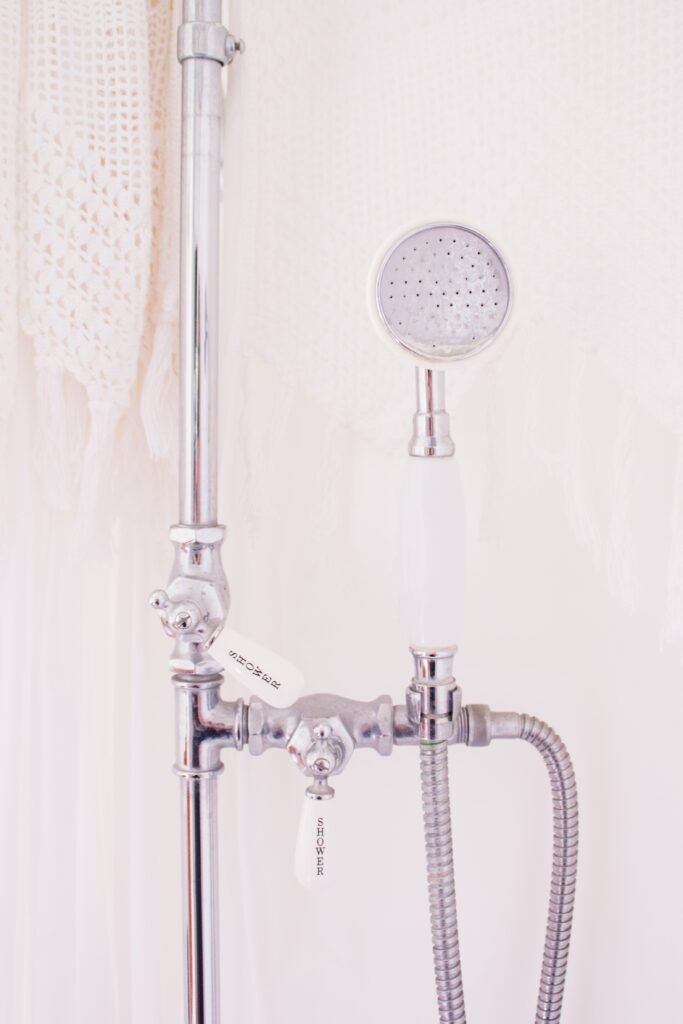
Looking to make your bathroom a safer place? In this article, you’ll find 10 bathroom safety tips that will help you prevent accidents and create a secure environment. From installing grab bars to keeping the floor dry and slip-resistant, these tips will ensure that your bathroom becomes a haven of safety for you and your loved ones. So, let’s dive in and discover the simple yet effective ways to make your bathroom a worry-free space.

This image is property of images.unsplash.com.
Prevent Slips and Falls
Slips and falls can happen in any area of your home, but the bathroom is one of the most common places for accidents to occur. Luckily, there are several measures you can take to prevent slips and falls in your bathroom.
Install Non-Slip Flooring
One of the easiest ways to prevent slips in your bathroom is to install non-slip flooring. This type of flooring is designed to provide extra traction and reduce the risk of accidents. Non-slip flooring can be made of materials such as rubber or textured tiles, which help to improve grip even when the floor is wet. Consider replacing your current flooring with a non-slip option to make your bathroom safer.
Use Bath Mats
Another effective way to prevent slips and falls in your bathroom is to use bath mats. Place a bath mat outside your shower or bathtub to provide a non-slip surface when stepping out. Additionally, using a bath mat inside the shower or bathtub can help to prevent falls while bathing. Look for bath mats with suction cups on the bottom to ensure they stay securely in place.
Install Grab Bars
Grab bars are a must-have for any bathroom, especially for those who have difficulty with balance or mobility. These bars are typically installed next to the toilet, in the shower or bathtub area, and near the sink. When installed correctly, grab bars provide support and stability, making it easier to prevent slips and falls. Choose grab bars that are sturdy and able to support your weight.
Secure Rugs and Mats
If you have rugs or mats in your bathroom, it’s important to secure them properly to prevent slips. Use double-sided tape or nonslip rug pads underneath your rugs or mats to keep them in place. This will help to prevent them from sliding or bunching up while you’re walking on them, reducing the risk of tripping.
Clean Up Spills Immediately
Lastly, it’s important to clean up spills or water puddles in your bathroom immediately. Wet surfaces can be extremely slippery, so quick action is necessary to prevent accidents. Keep a towel or mop within easy reach so you can quickly dry any wet spots. Additionally, encourage everyone in your household to be mindful of water spills and promptly address them to maintain a safe bathroom environment.
Ensure Adequate Lighting
Proper lighting is essential in the bathroom to prevent accidents and ensure your safety. Here are some tips to ensure you have adequate lighting in your bathroom.
Install Bright Lights
Start by installing bright lights in your bathroom. Bright and well-lit spaces make it easier to see potential hazards and navigate the area safely. Avoid using dim or low-wattage bulbs that can create dark corners or shadowy areas. Opt for high-quality, energy-efficient light fixtures that provide ample illumination throughout the entire bathroom.
Use Nightlights
To make night-time trips to the bathroom safer, consider using nightlights. These small, low-level lights can be plugged into an outlet and provide enough light to navigate the space without having to turn on the main bathroom lights. Nightlights are especially useful for children or those who frequently wake up during the night.
Keep Light Switches Accessible
Ensure that your light switches are easily accessible, especially in the dark. Install light switches at standard heights and in convenient locations, making it easy to turn on the lights without fumbling around. If necessary, consider using motion sensor switches that automatically turn on when you enter the bathroom.
Use Motion Sensor Lights
In addition to regular light switches, consider incorporating motion sensor lights in your bathroom. These lights are activated by movement and can help you navigate the bathroom hands-free during the night or when your hands are full. Motion sensor lights are particularly convenient when you have guests or elderly individuals who might have difficulty finding light switches.

This image is property of images.unsplash.com.
Maintain Proper Ventilation
Proper ventilation is crucial in the bathroom to remove excess moisture and prevent the growth of mold and mildew. It also helps to improve air quality and prevent unpleasant odors. Follow these tips to maintain proper ventilation in your bathroom.
Install Exhaust Fan
Install an exhaust fan in your bathroom to help remove moisture, steam, and odors from the air. An exhaust fan will pull out the humid air and create airflow, reducing the risk of mold and mildew growth. Make sure the fan is properly sized for your bathroom and run it during and after any shower or bath to effectively remove moisture.
Keep Shower Curtains and Doors Open
After showering or bathing, make sure to keep your shower curtains or doors open to allow air circulation. This will help to dry out the bathroom faster and reduce the chances of mold or mildew formation. If you have a shower curtain, make sure to spread it out fully to prevent any areas from staying damp.
Clean Bathroom Regularly
Regular cleaning is essential for maintaining proper ventilation in your bathroom. Moisture, hair, and other debris can accumulate over time, creating an environment conducive to mold or mildew growth. Clean your bathroom regularly, focusing on areas that tend to accumulate moisture, such as the shower, bathtub, and sink. Use mildew-resistant cleaning products to ensure a clean and sanitary bathroom environment.
Control the Temperature
Maintaining the right temperature in your bathroom is crucial for comfort and safety. Extreme temperatures can cause burns or discomfort during bathing. Here are some tips to help you control the temperature in your bathroom.
Set Water Heater Temperature
Set your water heater temperature to prevent scalding accidents. The ideal water temperature for the bathroom is around 120°F (49°C). This temperature provides hot enough water for a comfortable shower or bath while reducing the risk of scalding. Be sure to check and adjust your water heater settings to maintain a safe temperature.
Install Anti-Scald Devices
Consider installing anti-scald devices in your bathroom to further prevent burns from hot water. These devices, such as thermostatic mixing valves or pressure-balancing valves, help regulate the water temperature and prevent sudden fluctuations. Anti-scald devices are particularly important if you have young children or elderly individuals in your household.

This image is property of images.unsplash.com.
Organize and Declutter
Keeping your bathroom organized and clutter-free is not only visually appealing but also crucial for maintaining a safe environment. Here are some tips to help you organize and declutter your bathroom.
Remove Hazards
Start by removing any unnecessary items or hazards from your bathroom. Cluttered countertops, shelves, or the edge of the bathtub can increase the risk of accidental falls or injuries. Keep the bathroom clear of unnecessary items and ensure that bottles, containers, and other objects are properly stored in cabinets or organizers.
Keep Clean and Dry
Regular cleaning and maintenance are essential for a safe bathroom environment. Make it a habit to wipe down surfaces regularly to prevent the accumulation of water or other liquids that can create slippery areas. Also, ensure that your bathroom stays dry by using towels, bath mats, or rugs to absorb excess water.
Use Organizers
Utilize organizers to keep your bathroom essentials neat and tidy. Use drawer dividers, shower caddies, or small storage bins to keep toiletries, cleaning products, and other items organized. By having designated spaces for your belongings, you can reduce the chances of items falling or cluttering your bathroom surfaces.
Place Essential Items Within Reach
Arrange your bathroom in a way that places essential items within easy reach. For instance, place towels, soaps, and toilet paper where they are easily accessible, especially for individuals with limited mobility. This helps minimize the need for reaching and prevents unnecessary movements that could potentially lead to accidents.
Secure Medications and Cleaning Products
Medications and cleaning products can pose significant risks if not stored properly in your bathroom. Take the necessary precautions to secure these items and ensure the safety of everyone in your household.
Lock Medicine Cabinets
If you store medications in your bathroom, it’s important to keep them out of reach and properly secured. Install a lock on your medicine cabinet or store medications in a locked box to prevent accidental access. This precaution is especially important if you have children or individuals with cognitive impairments in your household.
Store Chemicals Properly
Cleaning products and other chemicals should be stored safely in your bathroom. Keep them in cabinets with childproof locks or in high cabinets that are out of reach of children. Avoid storing chemicals near food or medications, as mixing them can be dangerous. Always read and follow the instructions on the labels of cleaning products for proper handling and storage.
Keep Medications in Original Containers
When storing medications in your bathroom, it’s crucial to keep them in their original containers. The labels on prescription bottles contain important information such as dosage instructions, expiration dates, and potential side effects. Keeping medications in their original containers ensures that you have accurate information and reduces the risk of confusion or accidental ingestion.
Make Bathing Safer
Bath time can be enjoyable, but it can also be a source of accidents if precautions are not taken. Follow these tips to make bathing safer for everyone in your household.
Install Handheld Showerhead
Consider installing a handheld showerhead in your bathroom. A handheld showerhead provides greater flexibility and control when bathing. It allows you to direct the water flow and rinse off specific areas of your body without the need for excessive movement or reaching. This can be particularly beneficial for individuals with limited mobility or balance issues.
Use Shower Chairs or Benches
For added safety and comfort during bathing, consider using shower chairs or benches. These devices provide a stable seating surface, reducing the risk of slips and falls. Shower chairs or benches are especially helpful for individuals who have difficulty standing for extended periods or who tire easily. Choose a chair or bench that is sturdy, adjustable, and designed specifically for bathroom use.
Ensure Proper Tub and Shower Step Design
Ensure that your tub and shower have a safe and user-friendly step design. The entry and exit points of your tub or shower should be easily accessible and have slip-resistant surfaces. Consider installing handrails or grab bars near the tub or shower to provide support and stability when stepping in or out. Additionally, using non-slip bath mats inside the tub or shower can further enhance safety.
Ensure Accessibility
Ensuring that your bathroom is accessible is important for people of all ages and abilities. Here are some tips to make your bathroom more accessible.
Install Raised Toilet Seat
Installing a raised toilet seat can greatly enhance accessibility for individuals with mobility issues. Raised toilet seats raise the overall height of the toilet, making it easier to sit down and stand up. This can be beneficial for individuals with arthritis, knee problems, or other difficulties in bending or lowering themselves onto a standard-height toilet.
Use Toilet Safety Frame
A toilet safety frame is an assistive device that provides additional support and stability when using the toilet. This frame attaches to the toilet and typically has padded handrails, offering something to hold onto while sitting down or standing up. Toilet safety frames are particularly useful for individuals who have balance issues or require extra support.
Consider Walk-in Tubs
For individuals with limited mobility, walk-in tubs can be an excellent option to make bathing safer and more accessible. Walk-in tubs have a built-in door that allows individuals to step into the tub rather than having to lift their legs over the edge. This design significantly reduces the risk of falls and provides a convenient bathing solution for individuals with mobility challenges.
Install Appropriate Bathroom Fixtures
Choosing the right bathroom fixtures can help to enhance safety and accessibility. Here are some considerations when selecting fixtures for your bathroom.
Install Sturdy Toilet Paper Holder
Ensure that your toilet paper holder is sturdy and properly installed. A flimsy or unstable toilet paper holder can lead to accidents if it falls or causes someone to lose their balance. Choose a durable toilet paper holder that is securely mounted to the wall to prevent any mishaps.
Choose Slip-Resistant Faucets
Faucets in the bathroom, particularly in the sink and bathtub, should be chosen with slip-resistance in mind. Look for faucets with textured surfaces or rubberized coatings that provide a better grip, even when wet. This can help to prevent slips and ensure that you have full control when turning on the water.
Install Lever-Style Door Handles
Consider replacing traditional doorknobs with lever-style door handles. Lever-style handles are easier to grasp and operate, making them more accessible for individuals with limited hand strength or dexterity. They also require less twisting or gripping motion, reducing the risk of accidental injuries while opening or closing doors.
Teach Children Bathroom Safety
Teaching children about bathroom safety is essential to protect them from accidents and establish good habits. Here are some tips to help you educate children about bathroom safety.
Supervise Children
Always supervise young children in the bathroom, especially those who are still learning proper bathroom habits. Children should be supervised during bathing, toilet use, and handwashing to ensure their safety and prevent accidents. Keep bathroom doors closed and childproofed when not in use to limit access and reduce the risk of unsupervised visits.
Teach Proper Toilet Habits
Teach children proper toilet habits to promote cleanliness and safety. This includes teaching them to flush the toilet after using it, washing their hands thoroughly, and not playing with or wasting toilet paper. Emphasize the importance of hygiene and demonstrate proper techniques, such as using soap and water for handwashing.
Install Childproof Locks
Install childproof locks on toilet seats and cabinets to prevent unauthorized access. Childproof locks ensure that children cannot open toilet lids or access potentially harmful items such as cleaning products. These locks add an extra layer of protection and help to establish boundaries for children in the bathroom.
Keep Medications Out of Reach
Store medications out of reach of children to prevent accidental ingestion. Even child-resistant caps might not be enough to deter curious children from accessing medication. Store medications in locked cabinets or high shelves where children cannot reach them. It’s also important to educate children about the dangers of taking medication without permission.
In conclusion, ensuring bathroom safety is crucial for everyone in your household, regardless of age or ability. By following these tips and implementing the necessary measures, you can create a safe and comfortable bathroom environment. From preventing slips and falls to organizing and decluttering, each step contributes to a safer and more accessible bathroom. Remember to educate children about bathroom safety and involve them in practicing good habits. With these precautions in place, you can enjoy a relaxing and worry-free experience in your bathroom.

